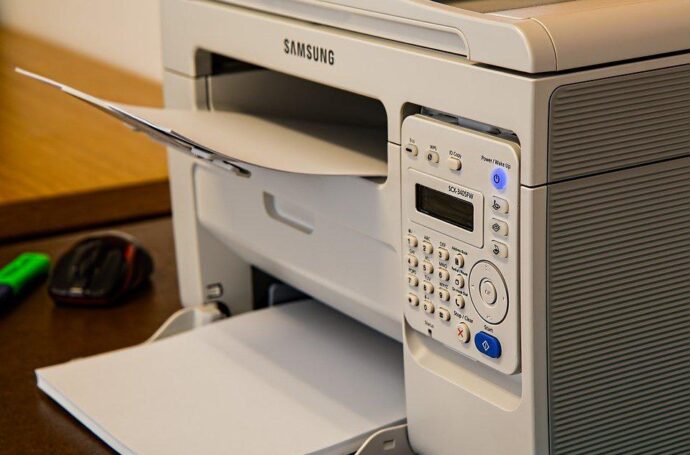
Humanity has seen epidemics and pandemics like the Spanish Flu, H1N1, yellow fever, and Ebola. All these disease outbreaks taught resilience to humankind. They impacted life very harshly but, in the end, were eradicated by humanly persistence and motivation to survive. Every pandemic gave rise to new avenues that proved helpful for humanity to mollify the hardships. Some transformed the way people interact with inhabitants of other continents. Some changed the traveling protocols. At the same time, some highlighted the need for enhanced medical facilities and quick response systems to a virus outbreak.
COVID-19 is certainly a pandemic that this generation will remember for quite some time. It has disrupted human life in an unprecedented way. Reduced connectivity and social interactions worsened the agony of sudden lockdowns. The world has seen the worst economic downturn since the Great Depression. According to the United Nations, the global economy realized a loss of a whopping $8.5 trillion in output due to COVID-19. Not just the developing countries, but even the developed countries had their GDP plunged to -5.0% in 2020.
It sounds depressing, and indeed it is. When 90% of the global economy was under lockdown, what else could someone expect? The economic downturn has pushed approximately 34.3 million people below the poverty line. Cutting a long yet disheartening story short, COVID-19 burnt the world economy to ashes. In such hard times, technology came forward to save the already bad situation from getting worse.
Countries have shifted to digitalization in no time where they might have taken years to return to normalcy. It was the only method to a viable economic exchange during the lockdowns. All leading economic engines, from banking to trade, transformed their operations to adapt to digitalization. Although many sectors were already reliant on technology, the complete dependence arose from the pandemic. This article sheds light on how technology saved the economy during Covid-19.
-
Digital Banking
Digital banking is not new to an ordinary user of banking services. It has been there for over decades. However, market penetration and customer base for digital banking services were negligible as compared to branch banking. Digital banking has seen a paradigm shift during COVID-19. According to McKinsey, COVID-19 has accelerated the growth toward digital banking by at least two years. Additionally, Scotiabank estimates that 60% of people who have shifted to digital banking options will not return to branch banking even when this pandemic recedes.
The world saw a practical blend of business administration, banking, and information technology. There was a sudden hike in demand for online MBA information technology programs mainly because the corporate sector adapted IT-banking cross products. Consequently, they included options like mobile wallets, remote customer acquisition, app-based biometric verification, and digital credit scoring for loan origination. These revolutionary banking options have made it quite improbable for customers to return to traditional branch banking the way they used to be.
-
Digital Marketing
The COVID-19 quarantines and lockdowns have entirely revamped the way businesses reach their target customers. Outlets, showrooms, malls, and markets were all closed. Customer footprint was nearly zero in marketplaces. That is where the traditional approach transformed into a digital one. Digital marketing gained unparalleled prevalence than ever before. According to research, 61% of the marketers reorganized their short-term marketing strategies to adopt digital tools.
COVID-19 situation has increased the overall online traffic by 35%. In such an online world, 14% of shoppers are now purchasing only through social media – not even considering brands’ official online stores right now. Digital marketing saved several businesses from going bankrupt. Marketers spent a staggering amount of $100 billion on just digital marketing in 2020. Then, we can only assume the amount of business it must have generated. In such testing times, digital marketing provided effective customer touchpoints to keep the companies alive.
-
E-Commerce
The stock price of Amazon soared by an astonishing 70%. The wealth of Jeff Bezos, Amazon’s founder, has increased by $75.6 billion. When everything was struggling, Jeff Bezos’ net worth rose by a mind-boggling $11.5 million an hour during the pandemic. That’s too much to brag. Well, this is the case with almost every leading e-commerce based company.
The global e-commerce sales in 2020 were around $4.28 trillion it is an increase of 27.6% from the previous year. Such an exemplary expansion in e-commerce became possible through embedded finance technology which serves as the backbone for e-commerce machinery. It caters to the payments made during e-commerce sales. The most significant barrier to e-commerce success was the lack of secure payment channels. But Embedded Fintech has provided a viable solution.
-
Big Data and AI
Organizations, businesses, and even countries that never forecasted a shock-like COVID-19 suffered a tremendous loss. They didn’t have a contingency plan to tackle the atrocities of a virus outbreak. That is where they realized the importance of big data management and artificial intelligence to create useable data interpretations. Moreover, the global shift toward digital marketing, online banking, e-commerce, and digital trade radically increased the importance of big data and AI.
The big data market is rapidly growing at a promising CAGR of 12.3% since the wake of COVID-19. The application of big data and AI in economic endeavors is proving financially prolific. Comprehensive data visualization generated through AI algorithms provide efficient help in decision-making. Authorities can chalk economic restoration plans using these data trends.
Conclusion
No one can stop anything like the COVID-19 pandemic from happening, but we can take preventive measures. We cannot guarantee something like this will not happen again. COVID-19 has already extended to yet another year. We never know for how much longer it will remain in our life. That is where humanly survival instincts come into play. We maximize our survival chances by adapting to the external situation.
Similarly, our economies can recover and survive if we incorporate technological marvels into them. These times place a significant emphasis on assimilating technological advancements into traditional economic functions and business domains. We have to transform our banking channels, marketing orientation, trade philosophies, and data utilization. Only then will our economies be able to match pace with this evolving global landscape.
 Some businesses don’t even realize how much waste they’re producing until they start to look for alternative ways of doing things and see the difference they could make. For this reason, more and more businesses are starting to recognize the impact that they have on the environment, and doing their part by reducing waste.
Some businesses don’t even realize how much waste they’re producing until they start to look for alternative ways of doing things and see the difference they could make. For this reason, more and more businesses are starting to recognize the impact that they have on the environment, and doing their part by reducing waste. 











 Whether you have been working from home for years or this is something new to you, the goal is to be productive.
Whether you have been working from home for years or this is something new to you, the goal is to be productive.
 Supply chain solutions are a critical aspect of making sure that
Supply chain solutions are a critical aspect of making sure that 


